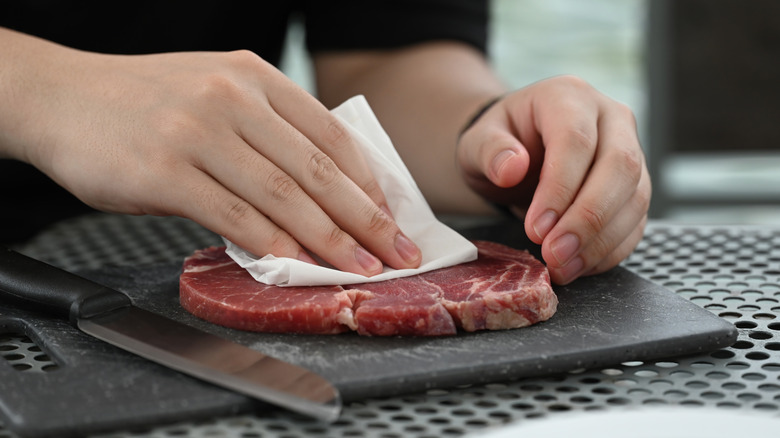Expert Tips For Restaurant-Level Steak Sandwiches
Sinking your teeth into a hearty steak sandwich is a carnivore's delight. It's both simple and sophisticated, at home everywhere from a brown bag lunch to a high-end steakhouse. Unfortunately, home cooks all too often find their attempts to recreate restaurant-level steak sandwiches fall short. That's why we got some tips from chef Michelle Wallace, owner and founder of B'tween Sandwich Co., on how to step up your sandwich game.
First, Wallace points out that a good steak sandwich starts long before the meat hits your grill or frying pan. She recommends sourcing from a quality butcher rather than just grabbing something from the supermarket meat case. "When splurging on a good steak, you want to make sure that you're getting a great product. Also, a butcher can walk you through any questions that you may have when selecting your cut," says Wallace.
Another critical pre-cooking step is allowing the steak to come to room temperature. "Letting it sit for 30 minutes before cooking will allow for even cooking," according to Wallace. Don't let it warm up for too long, however. The USDA warns that raw meat should never be left at room temperature for more than two hours, as this can allow dangerous levels of bacteria to grow.
Pat dry and be patient
Steak sandwiches, like any other steak dish, benefit from the textural contrast of a seared crust and a tender interior. To maximize this sear, Michelle Wallace has two pieces of advice: "Make sure that the surface is dry, and the seasoning is heavy. This is imperative for that beautiful, delicious crust to develop." That's because excess water prevents the surface of the meat from reaching the temperature required for ideal browning. (Whereas water begins boiling at 212 degrees Fahrenheit, browning starts at 280 degrees as heat alters proteins and sugars during a process known as the Maillard reaction.)
Wallace's final tip applies to the crucial period after you've finished cooking your steak. She advises home cooks to let their steaks rest for around 10 minutes before slicing. The reason it's important to let meat rest before enjoying comes down to juiciness. As the steak cools, the muscle fibers will relax, and the juices will evenly distribute throughout the cut. Slicing too soon risks causing the juices to flow right out, leaving your steak dry.
It's important to keep in mind that there are other mistakes people makes when cooking steak sandwiches, such as failing to get creative with toppings. But even if you keep things simple, the above advice will go a long way toward crafting a better final product. So, the next time you want a steak sandwich, remember these tips, and you'll find yourself cooking a restaurant-worthy meal.

